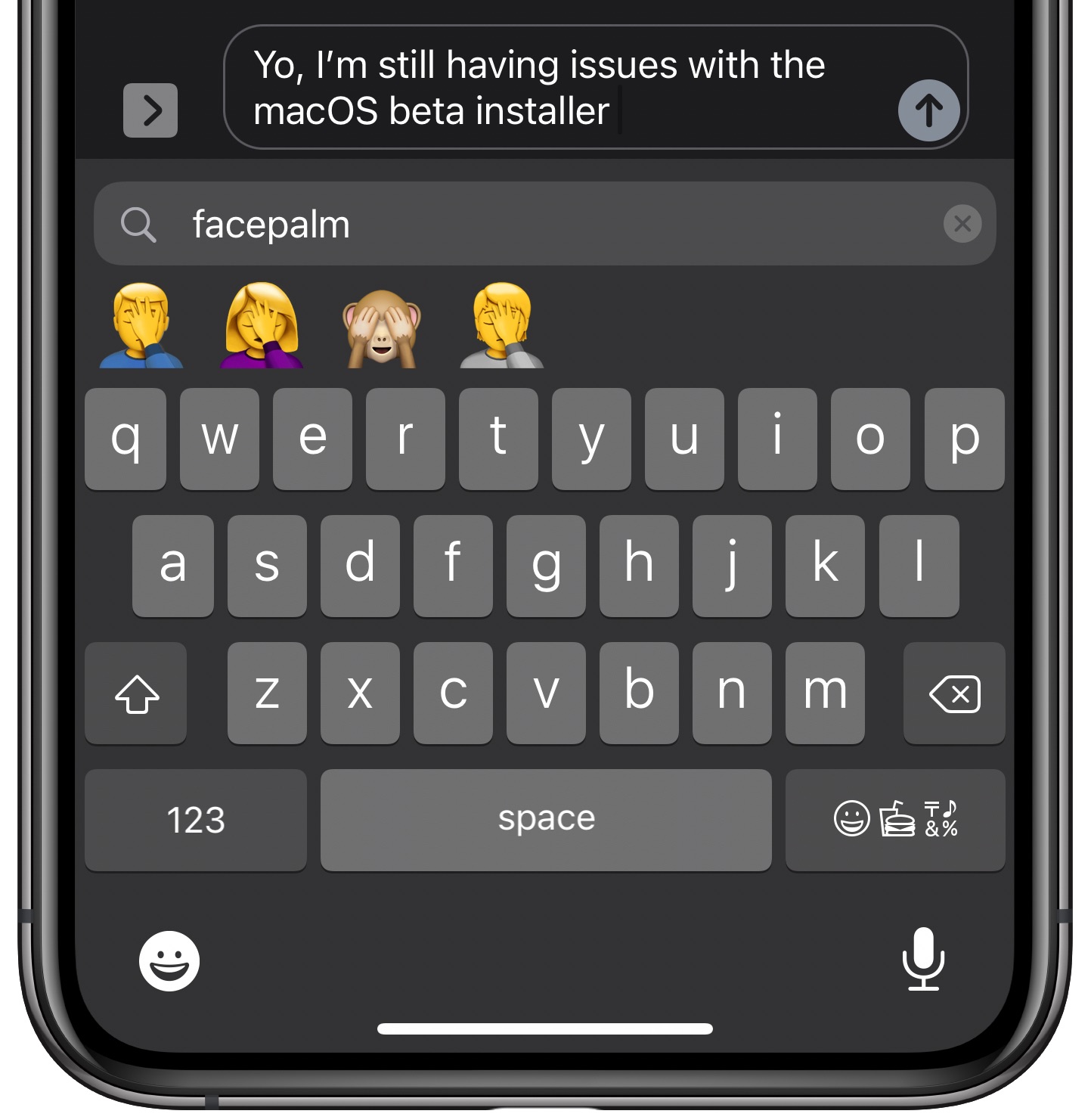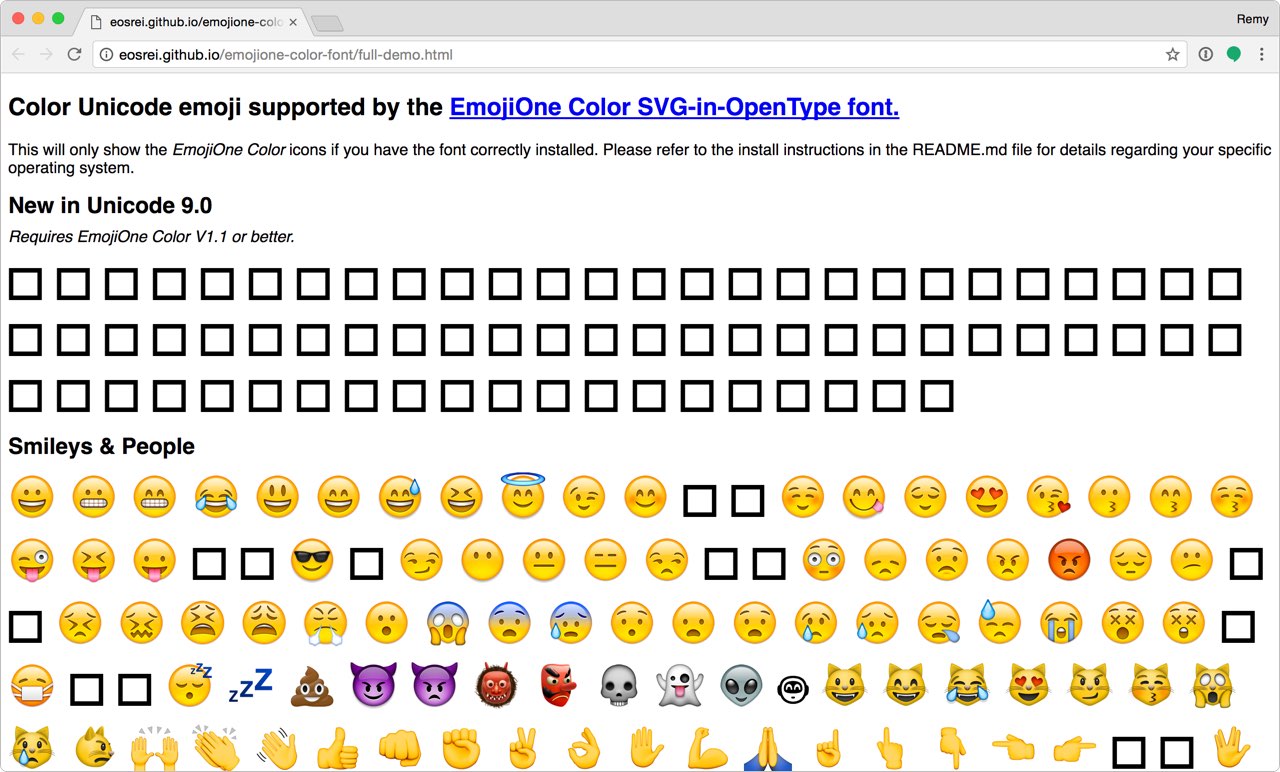

- #UPDATE APPLE EMOJIS ON MAC INSTALL#
- #UPDATE APPLE EMOJIS ON MAC ZIP FILE#
- #UPDATE APPLE EMOJIS ON MAC UPDATE#
- #UPDATE APPLE EMOJIS ON MAC SKIN#
- #UPDATE APPLE EMOJIS ON MAC CODE#
I tried combination I could think of, however, and could not get skin toned emojis to work.
#UPDATE APPLE EMOJIS ON MAC CODE#
From there, you can also change the shortcodes to something you'll remember better or find more appropriate.Īnd if you want to change skin tones, the developer, Ryan McLeod, says you can tag a skin tone code such as :skin-tone-: on to the code and the two will combine. What Apple calls the "Grinning face," Macmoji simply calls "smile." So you may need to look up specific codes for Macmoji in the text substitutions menu. Even worse, there isn't a universal naming system for emojis. The downside is that you need to know the name or code for each individual picture.

Macmoji, unfortunately, does not work in Chrome. Download Emoji Emoticons for macOS 10.8 or later and enjoy it on your Mac. Macmoji works in any app or text field where Apple's autocorrection is present, such as Messages, Mail, Tweetbot and many other native apps. Read reviews, compare customer ratings, see screenshots, and learn more about Emoji Emoticons. When you hit the space bar, the substitution will replace the code with the image. To use Macmoji, you need to wrap the name of the emoji in colons, such as :smile: or :muscle.
#UPDATE APPLE EMOJIS ON MAC ZIP FILE#
#UPDATE APPLE EMOJIS ON MAC UPDATE#
If you update your Mac to macOS High Sierra, the font file will update and show you all of the new emojis.

Download the ZIP by clicking on the Clone or download button on the right and clicking Download ZIP.
#UPDATE APPLE EMOJIS ON MAC INSTALL#
To install Macmoji on your Mac, head over to the Macmoji GitHub repo, then: It's called Macmoji and it adds Slack-like emoji input to your Mac. If the hotkey still sounds like too much work or you're used to using Slack, there's yet another option. And when you narrow down the results enough to select the correct emoji, clicking it once will insert it and close the menu. By default, this hotkey shows a condensed menu that automatically places the cursor in the search bar, so you can immediately begin typing to search. Just press Control + Command + Space from anywhere to show the Input menu. Fortunately, there is a better way.Īpple has included a hotkey to bring up the Input menu. If you're emoting more than a few times per day, this method requires too many steps and takes entirely too long. To enter an emoji, place your cursor where you want it, open the Input menu, find the image you want to insert and then double-click. Within this menu, you can search for and select the exact image that sums up your mood. Click the Input menu icon in the menu bar and select Show Emoji & Symbols. Open the Input Sources tab and click the checkbox beside Show Input menu in menu bar. To get to the menu, go to System Preferences > Keyboard. Input menu and hotkey supportĮmojis have actually been available in OS X for quite some time, but it's buried rather deep for quick and frequent access. If you're using a Mac, there are a few simple ways to work tiny-picture magic. No longer do you need to search the web for a directory of emojis, copy, paste and send. However, if you have ever felt the urge to tag a burrito on the end of a message and realized it's not nearly as simple on the computer as your phone, you're not alone. They can be found in emails, social posts, Snapchats and even in some YouTube videos. Emojis are included in the vast majority of my text messages and IMs. That like many tech trends, it would come and go and we would soon forget about the miniature emotion depictions.įast forward to today and those tiny images have permeated just about every form of digital text. With the 13.2 update, Apple emoji list was complemented with a large set of absolutely new and improved and redesigned ones.Years ago, I was convinced emojis were a fad.


 0 kommentar(er)
0 kommentar(er)
